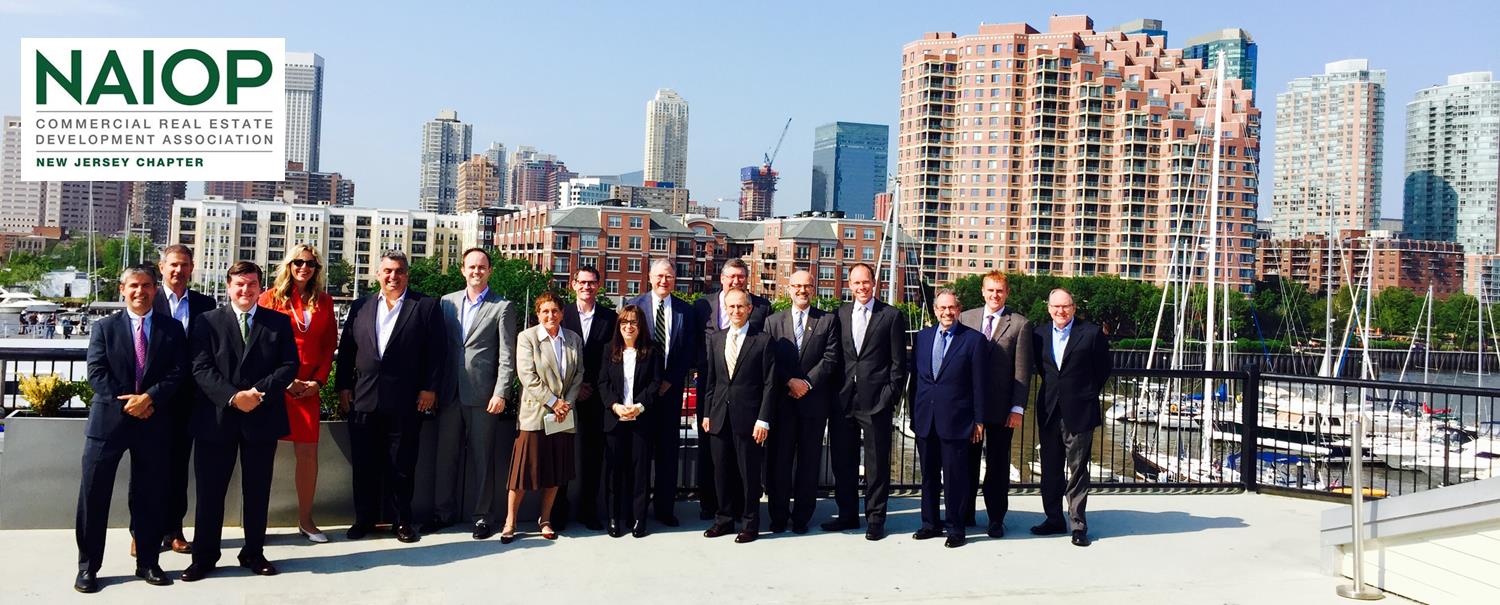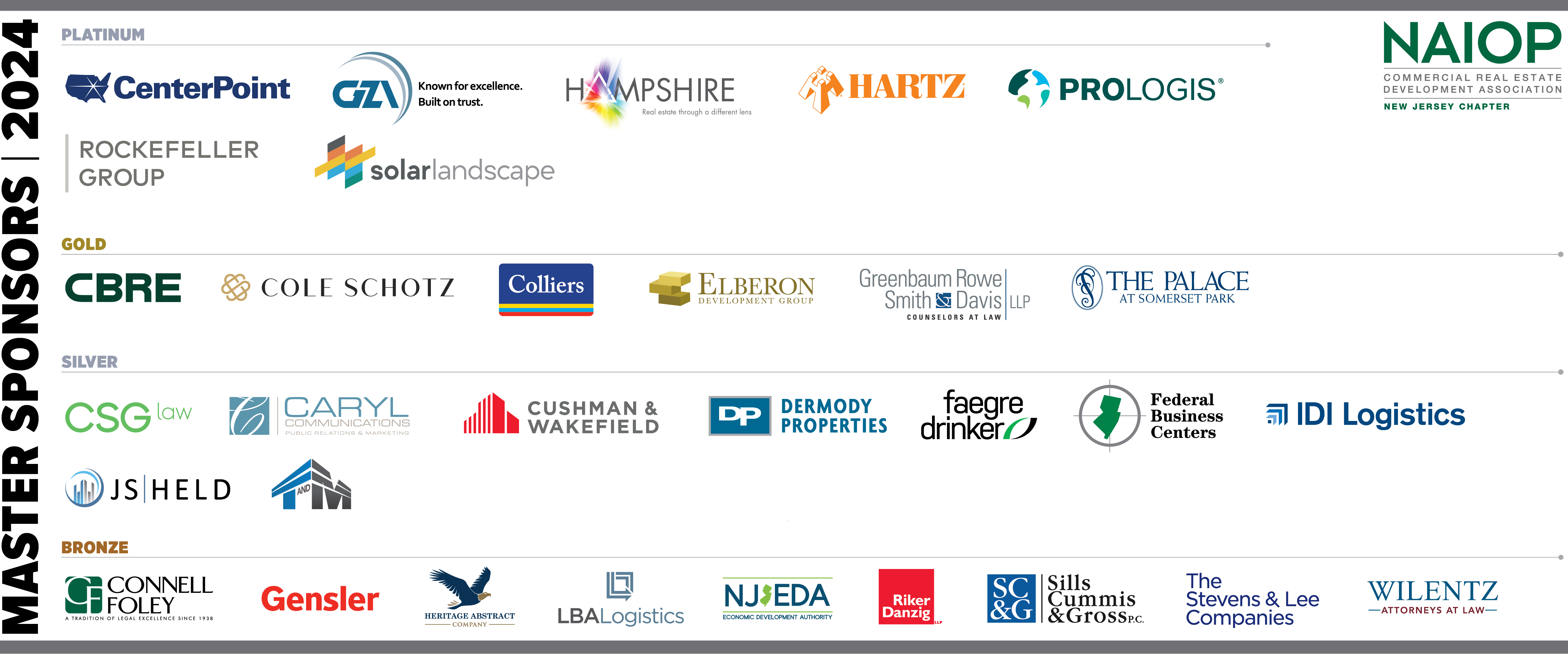Brief History of New Jersey Commercial Real Estate
In the early years of the 20th century, manufacturing, retail and wholesale trade, banking, and services grew rapidly in New Jersey. Office workers of the day were likely to be crowded together in a completely open environment, while bosses observed them from private offices, similar to the environment on a factory floor. With the proliferation of the automobile in the 1920s, New Jersey's population quickly decentralized into suburbs along main highways. In 1929, PSE&G’s Area Development Department began helping companies find sites and locate facilities in New Jersey. In 1935, the phrase "TRENTON MAKES THE WORLD TAKES" was installed on the lower bridge, and Trenton was a thriving industrial city with major pottery, ceramics, steel, and other heavy manufacturing interests.
Accessibility has always been the key to the growth. The Garden State Parkway was constructed between 1946 and 1957 to connect suburban northern New Jersey with resort areas along the coast and alleviate traffic on traditional north–south routes. The New Jersey Turnpike opened in 1952, paving the way for development unparalleled in the history of the state, from the Meadowlands at Exits 15, 15A and 16, to Port Newark/ Elizabeth between Exits 10 and 15, to the Central New Jersey market at Exits 8A, 8, 7A and 7, and further south. By 1957, New Jersey had more than 15,000 major industrial establishments. The population grew and real estate values soared as many new commercial enterprises sprang up.
The 1960s saw many significant developments in commercial real estate. The typical office was freed from partitions, and management was no longer ensconced in executive suites. Hartz Mountain ventured beyond its successful pet care business into real estate development with the building of a large speculative industrial distribution facility in Bayonne. The Hackensack Meadowlands Development Commission was created in 1969. Manufacturing and industrial jobs began to decline, and state government agencies began leasing office space in Trenton and the surrounding suburbs. Cali Associates (destined to become Mack-Cali) built its first office building in Cranford.
By the 1970s, New Jersey led the nation in the production of chemicals and pharmaceuticals, and had evolved four distinct areas: the Hudson-to-Trenton manufacturing hub with chemical and major pharmaceutical, apparel, petroleum, and glass industries; the Atlantic coast “vacation” region from New York Harbor to Atlantic City/Cape May; the Pinelands; and the southern, western and northern regions comprised of farms, forests and wealthy suburbs. In 1970, a lunch meeting between David Steiner and Frank Visceglia, Sr. was the genesis of the New Jersey Chapter of NAIOP, uniting all facets of the non-residential development sector to advocate for pro-growth public policies. New Urban Enterprise Zone incentives led to the construction of numerous malls and big-box retailers, such as the Elizabeth Center and Jersey Gardens along the Turnpike. In the 1970s and 1980s, the focus on suburban office development spurred the building of millions of square feet of class-A office space. Ground was broken on Giants Stadium and the Meadowlands Racetrack in November of 1972, and both opened in the fall of 1976.
The 1980s brought the “cubicle farm” to the office environment, and the rise of the industrial warehousing complex known as “8A” pioneered by Matrix Development Group. The 8A distribution submarket (midway between Boston and Washington, and between New York City and Philadelphia) offers immediate access to the New Jersey Turnpike, easy connections with Routes 1, 130 and 206 and Interstates 195, 295 and 287 and direct links to Port Newark/Port Elizabeth, Newark Liberty International Airport and Philadelphia Airport. Between 1982 and 1992, Trenton saw more than a dozen office buildings constructed primarily by the state to house state offices. Another part of south-central New Jersey saw a spurt of commercial growth: in Burlington County, more than five million square feet of commercial space were built within five years between Exits 4 and 5 of the Turnpike.
The 1990s were challenging for New Jersey cities, as the total value of property dropped slightly as values in suburban and rural towns continued to escalate. After decades of decline, Perth Amboy welcomed $600 million in housing and retail development to be built on former industrial sites. The state offered incentives for the redevelopment of brownfields. By the end of the 1990s, with a booming national economy and the state's concentration of skilled and specialized labor, most New Jersey cities began to experience a slight rebound.
In the new century, New Jersey's strategic location, superb transportation network, and advantageous business characteristics propelled the growth of its industrial real estate market to among the nation's largest at upwards of three-quarters of a billion square feet of buildings by 2002. Increased shipments into Ports Newark and Elizabeth drove improvement in the state's industrial market. About 4 million square feet of industrial space would be completed that year, 75% of it in the New Brunswick/ Piscataway submarket and much of the building consisting of warehouses of between 350,000 and 400,000 square feet. By 2008, northern New Jersey ranked as the 9th largest market for co-location and data center services in the United States, and first in broadband telecommunications and broadband penetration.
Although the term “telecommute” was coined way back in 1972, and every few years we were told the office building would soon become obsolete, only a fraction of the work force worked remotely until the COVID-19 Pandemic changed everything. Before the pandemic, flexible work spaces were in demand as work styles and corporate cultures evolved. Class-A office tenants wanted the security of duplicated systems, back-up generators and even redundant utility feeds, post-Sandy. More and more tenants are interested in “green” and sustainable buildings and work spaces. As the decade closed, New Jersey had 83 LEED (Leadership in Energy Efficient Design) certified buildings, and the new Meadowlands stadium was termed “the greenest stadium in the country”. Changes in materials handling and logistics created changes in employment needs and site requirements for warehouse tenants. Modern automated warehouses require 25 to 30 percent more employees, at least 30-feet for vertical racking, since horizontal development space is so limited, and more of a building's total space as finished office space.
As we move deeper into the 2020s, the unrelenting expansion of e-commerce continues to drive a red-hot industrial market in NJ, supported by the Port of NY & NJ, NJ's transportation network and ever-expanding warehouse distribution facilities. The COVID-19 Pandemic, demographic shifts, the increasing influence of millennials, the access vs. ownership economy, and the imperative to capture and retain young talent are the factors affecting public policy and investment decisions. In 2020, NAIOP NJ celebrated 50 years of service to the industry.

